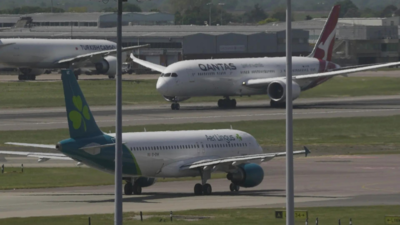Rising Costs in Aviation: Factors Driving Up Commercial Plane Prices

As the global aviation industry grapples with an increasing array of challenges, the prices of commercial aircraft are poised for a significant uptick. This trend is largely fueled by pressures stemming from political decisions, particularly the tariff policies instituted by former US President Donald Trump, which are reshaping global trade dynamics.
Since 2018, the cost of acquiring new planes has surged by approximately 30 percent. This alarming increase can be attributed to a multitude of factors, including widespread supply chain disruptions that were exacerbated by the COVID-19 pandemic and escalating costs for raw materials. Key materials such as titanium, energy resources, and essential components for aircraft manufacturing have all seen substantial price hikes. The situation has been made worse by geopolitical tensions, notably the exclusion of Russian titanium suppliers from the US market.
Richard Aboulafia, managing director at AeroDynamic Advisory, highlighted the specific impact of losing access to Russian titanium, stating, Anything titanium... especially since all that Russian capacity has been cut off from the US and, to a lesser extent, from Europe has inflated at a particularly high rate. Aboulafia has estimated that the costs for materials and equipment have surged by about 40 percent since 2021. He also pointed to the ramifications of Trump's 25 percent tariffs on steel and aluminumimperative commodities in aircraft productionindicating a paradox where raw materials were previously accessible but have now become a significant hurdle due to these trade policies. Its kind of ironic, raw materials were not a problem, but Donald Trump is determined to make them a problem, Aboulafia remarked.
Labour costs are another critical element in the escalating price of commercial aircraft. In recent developments, Boeing signed a new contract with its machinists' union in Seattle, which included a notable wage increase of 38 percent over a four-year period. Similarly, Spirit AeroSystems, a vital supplier for both Boeing and Airbus, has agreed to comparable wage hikes, further contributing to the overall increase in production costs.
John Persinos, editor-in-chief at Aircraft Value News, expressed concern over the worsening inflation within the aviation sector, stating, these tariffs are disastrous. Despite these skyrocketing prices, the official catalogue listings from major manufacturers Boeing and Airbus have not reflected this trend. Boeing has not updated its pricing list since 2023, while Airbus continues to use figures from 2018.
However, experts caution that catalogue prices often do not provide a true representation of market values. Aboulafia described catalogue prices as a complete work of fiction, suggesting that significant discounts are frequently negotiated. You got 50 percent off for showing up dressed nicely, he quipped. In fact, Airbus has acknowledged that it has moved away from catalogue pricing due to the variability of final costs based on numerous factors, including aircraft configuration, pilot training, and maintenance support.
Contracts for aircraft also typically feature inflation-linked adjustments and can be modified in response to delivery delays or fluctuations in currency values. A recent example of pricing trends can be seen in a major order placed in February 2025 by All Nippon Airways for 77 aircraft from Boeing, Airbus, and Embraer. According to calculations by AFP, the price of the Boeing 787 Dreamliner reached around $386 million, up from $292 million in 2023. The listing for the 737 MAX increased to $159 million from $121.6 million, and the Airbus A321neo saw a rise to $148 million from $129.5 million in 2018.
Despite these rising costs, competition between Boeing and Airbus remains fierce, which keeps aircraft prices competitive. As Aboulafia underscored, The two companies fight for every transaction and that impacts pricing.



























